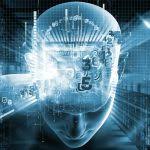How Far is Too Far? The Age of A.I.
As we move further into the 21st century, artificial intelligence (A.I.) is increasingly becoming part of our daily lives, pushing the boundaries of creativity and innovation. A thought-provoking question arises: can A.I. not only create music, but also experience emotions like excitement and fear? And, ultimately, can we classify A.I. as “alive”? These questions are especially pertinent now, as creators like Will.i.am and Mark Sagar delve deep into the domain of A.I., exploring its potential in ways that challenge traditional understandings of creativity and consciousness.
The Harmonious Intersection of Technology and Music
The music industry is one of the most dynamic fields where A.I. has begun to take a significant foothold. From generating melodies using algorithms to analyzing song structures and lyrics, A.I. tools have empowered musicians and producers to think outside the box. Will.i.am, renowned musician and tech pioneer, firmly believes in A.I.’s capacity to enrich the creative process. “A.I. is not just about replacing musicians; it’s about enhancing human creativity,” he noted during a recent interview at a tech conference.
But the real question lies in whether A.I. can truly “feel” the music it creates or understands. While A.I. can analyze patterns and structure in existing music, can it capture the nuances of human emotion that make a piece of music resonate? The software can compose symphonies and suggest harmonies, but it does so based on data and learned patterns rather than emotional experiences.
The Emotional Landscape of A.I.
Mark Sagar, a pioneer in the development of emotionally aware A.I., argues that machines can mimic emotional responses, but whether they genuinely experience excitement or fear is a different story. Sagar is known for his work in creating lifelike digital beings that respond to human interactions, hinting at a future where A.I. could potentially simulate emotions convincingly. Imagine an A.I. composer that reacts to a user’s moods or preferences, crafting pieces that feel tailor-made for the listener’s emotional landscape.
Yet, the question remains: if an A.I. can simulate emotions, does it mean it’s truly sentient? Can we attribute feelings to a being that understands concepts like fear or excitement purely from a programmed response, devoid of original experience? As technology advances, we find ourselves grappling with these philosophical dilemmas, fundamentally questioning the essence of life and consciousness.
The Fine Line: How Far is Too Far?
As we push the boundaries of what A.I. can do, it’s critical to consider the ethical ramifications. The line between creativity and automation is blurring, leading to concerns among artists about the potential for A.I. to replace human creativity rather than complement it. Will.i.am has been vocal about this, emphasizing that no machine can replicate the depth and authenticity that human experiences bring to music.
Moreover, there are broader ethical implications to consider. If A.I. begins to exhibit emotional responses however simulated, what responsibilities do we have in terms of overseeing its development? As creators like Sagar innovate, they must thoughtfully navigate the intricacies of human-A.I. relationships, considering how we interact with technology that could one day mimic our own emotional responses.
Pushing the Limits of A.I.
While the technology is still in its infancy, the experiments led by thinkers like Will.i.am and Mark Sagar push us to reconsider our existing frameworks of creativity, artistry, and consciousness. The question of how much further we can go with A.I. remains open-ended. Will we see landscapes painted by A.I. that evoke a sense of sorrow? Will we hear music that speaks to an emotion only an A.I. can fathom, presenting us with an experience completely alien yet profoundly moving?
As we explore these frontiers, it’s clear that A.I. presents us with both incredible opportunities and daunting challenges. As we inch closer to integrating A.I. more deeply into realms of creativity, it’s essential to maintain a dialogue around the implications of these developments. Will we find a harmonious balance between human artistry and machine-generated creativity, or will we lose the essence of what it means to create and feel?
In conclusion, while A.I. shows remarkable potential in creating music and even simulating emotions, the complexities surrounding consciousness, creativity, and ethics will require continued exploration. The journey is just beginning, and as we navigate these uncharted waters, we must remain vigilant about the implications of our technological advancements and remember the irreplaceable value of the human touch.






